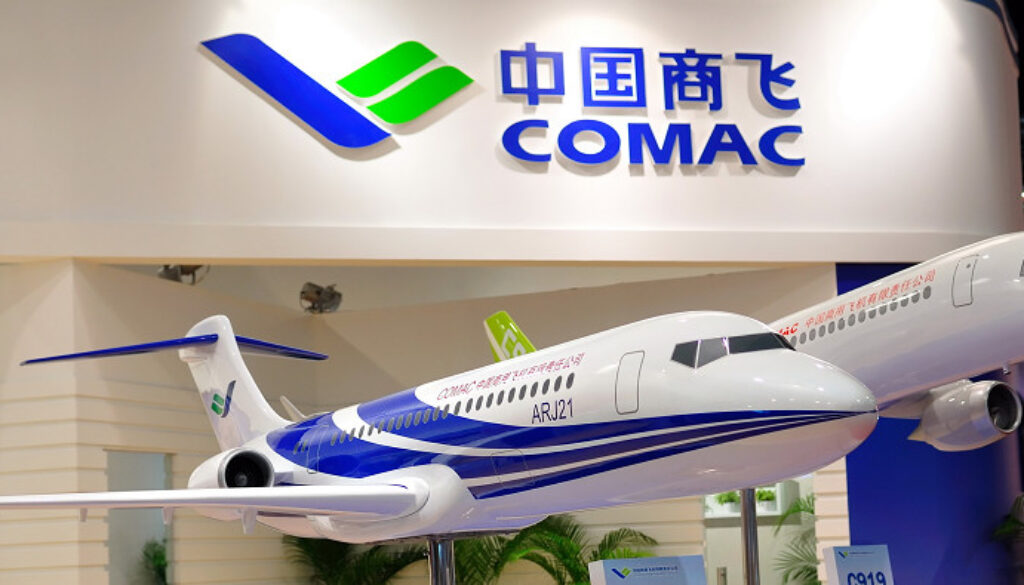Chinese Aviation Products Gain Access to US Market
[ad_1][ad_2]Source link
Chinese Aviation Products Gain Access to US Market. After 12 years of consultations, the US Federal Aviation Administration (FAA) and the Civil Aviation Administration of China (CAAC) signed an Implementation Procedures for Airworthiness agreement that allows both the FAA and CAAC to recognize each other’s approval of aircraft and aviation products’ and articles’ airworthiness.
The agreement will speed up the approval process for commercial aerospace products and parts for US and Chinese firms, according to a report from the US-China Economic Security Commission, but China’s domestic aircraft, the C919 and ARJ21, will still require FAA’s approval before they begin flying in US airspace.
China surpassed the United States as the world’s largest consumer of aircraft in 2005, and is expected to account for one-sixth of global jetliner demand over the next two decades. In 2016, China received 269 aircraft compared with the United States at 160. US aircraft manufacturer Boeing and its European competitor Airbus supply most of these aircraft, with China accounting for roughly 20 percent of Boeing’s aircraft deliveries.
At 8.3 percent, commercial aerospace products and parts accounted for the largest share of US global exports in 2016. Due to its growing demand, China is the largest export market for US aerospace firms. US exports of aerospace products and parts to China increased three-fold from $4.8 billion in 2006 to $14.6 billion in 2016, lifting China’s share of US exports from 6.3 percent in 2006 to around 10.7 percent in 2016. In the first three quarters of 2017, US exports grew 2.2 percent year-on-year. While all US aviation products are eligible for use in China’s market, this new agreement is likely to boost US exports to China through faster regulatory approvals for new products.
US imports of Chinese aerospace products and parts have grown more than three-fold from $246 million in 2006 to $862 million in 2016. In the first three quarters of 2017, US imports grew 9.5 percent year on year. Since only a small number of Chinese aviation products, such as rudders and doors for Boeing planes, were eligible for use in the US market, China accounted for just two percent of total US aerospace imports in the first three quarters of 2017. By comparison, the five largest US aerospace suppliers (France, Canada, Japan, Germany, and the United Kingdom) together accounted for roughly a third of the total US aerospace market in the first three quarters of 2017. The new FAA-CAAC agreement expands the number of Chinese aerospace suppliers eligible to export to the US market, increasing competition for US and other foreign aviation firms.
Chinese suppliers have benefited from decades of preferential government subsidies and policies that seek to create a globally competitive Chinese aircraft. The Chinese government requires foreign competitors to form joint ventures as a price of market entry and uses the promise of sales to state-owned airlines to shift foreign manufacturers’ sourcing and assembly operations to China. While complying with these requirements ensures access to the world’s largest aviation market, foreign firms have created their own competitors and improved China’s aerospace manufacturing capacity and quality.
[WooZoneProducts asin=”B077MTW6ZK”][/WooZoneProducts]
In September 2017, Boeing formed a joint venture with its emerging competitor, Commercial Aircraft Corporation of China, Ltd. (COMAC), to build its first overseas completion and delivery center. Boeing will provide $33 million for a 60 percent stake, and COMAC will provide $22 million for a 40 percent stake. COMAC is in the process of getting domestic and international certification for its C919 aircraft, which will compete with Boeing’s 737 and Airbus A320. While the C919 is not expected to enter into service until 2020, similar policies in high-speed rail created a globally competitive firm that unseated existing market leaders. Despite these achievements, China’s success in the global aviation market is not guaranteed. In a 2017 report prepared for the Commission, RAND Corporation found “US competitiveness is unlikely to be threatened in the near term because production of China’s large commercial aircraft—the C919—may be further delayed and operate less efficiently than current Western narrow-body aircraft on the international market.”
Need a Logistics Provider?
Compare over 100 InstantlyDiscover more from My Business Web Space
Subscribe to get the latest posts sent to your email.
